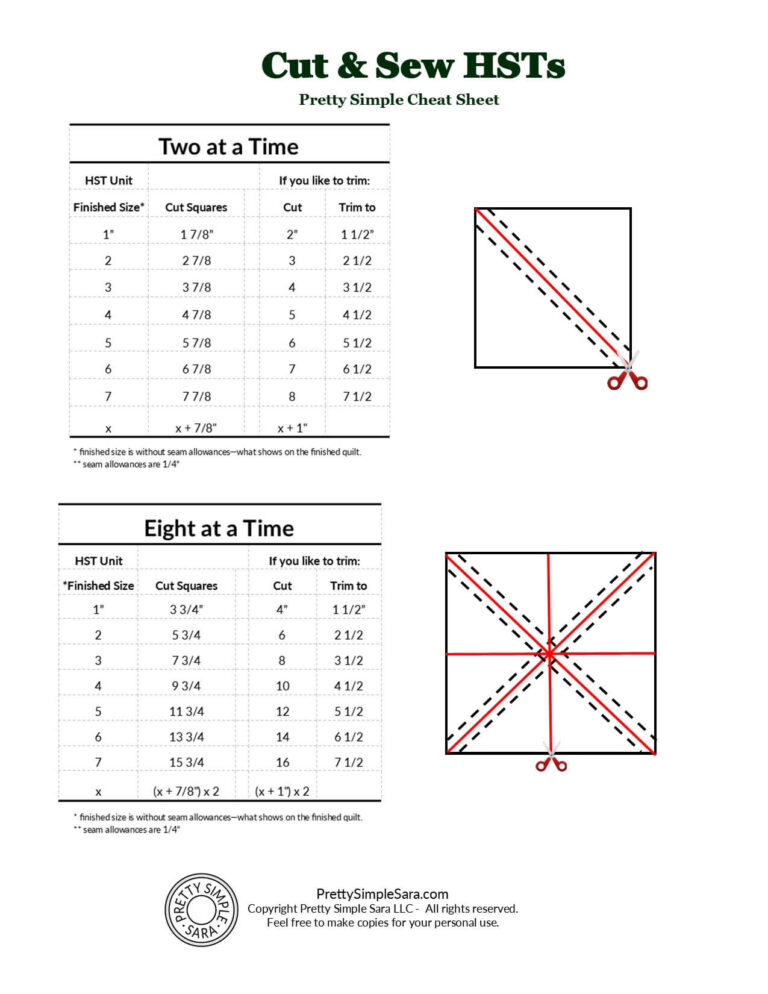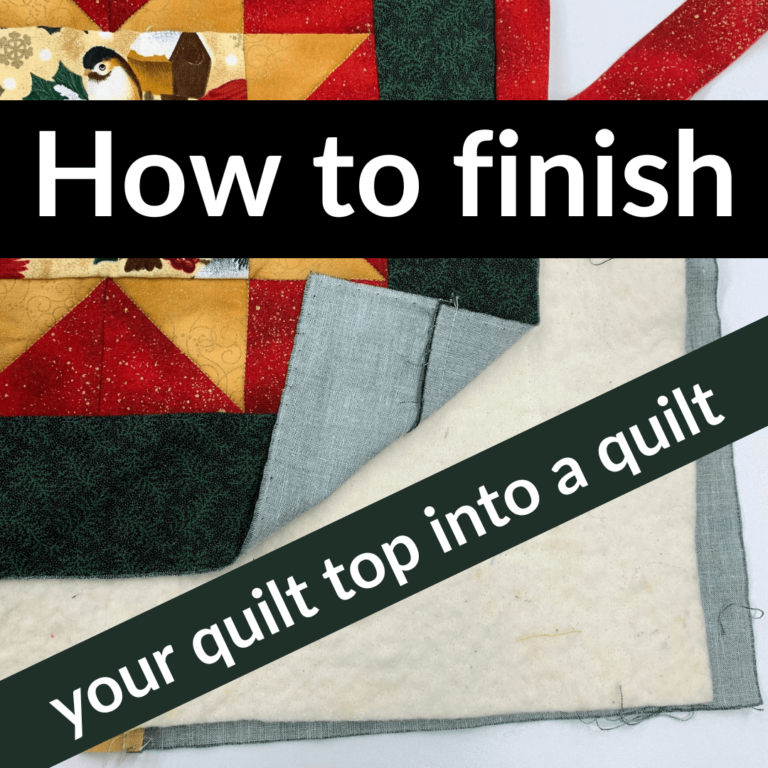5 Ways to ‘Quilt’ a Quilt Top
When you’ve finally finished piecing a quilt top you may be ready to just have it done NOW, or perhaps you want to make sure the next step respects all the hours you spent piecing the top. It can be overwhelming to switch gears between the careful consideration of color and pattern and corner matching to considering what type of quilting pattern or finish will best complement your top and turn it into a completed quilt.

Why quilts need quilting
The functional purpose of quilting is to hold the batting evenly in place between the quilt top and the backing without lumps and gaps. In the early days of quilting the batting was often loose pieces of wool, so the stitching needed to be closer together to hold all those little pieces in place. Modern battings are more stable and do not need quite as close quilting to not shift or break apart However, there still needs to be some stitching or tacking through all three layers of your quilt. Your batting package will actually tell you how close you need to make your stitching in order to not have bunch or shift between the top and the bottom.

Over time, quilters took this functional piece of stitching and turned it into a work of art. The pattern of stitches the quilting makes on the top is now an integral part of the overall design and beauty of the quilt.

Does a quilt have to be quilted?
Many new quilters get discouraged when they see heavily quilted quilts. If you’ve spent a lot of time and effort in piecing your top and suddenly now you believe you have to spend even more time quilting every square inch, you may feel like giving up.
It’s not necessary to quilt every square inch of a quilt. In fact many quilters dislike how stiff heavily quilted quilts can become. However, you do need something to hold the batting securely between the layers.
Tying or tacking a quilt
One of the fastest ways to secure the layers of a quilt together is by tying or tacking. This is securing the the layers in single points all across the quilt in a grid pattern instead of sewing lines. At each point you tie or tack the three layers together.
Tying is using yarn or embroidery floss to make a stitch through all the layers at each point and then tying the ends of the threads together into a knot. Tacking is just using the sewing machine to sew a few securing stitches, as if you were sewing a button on, at each point.

It’s important to read your batting package to know how close these points need to be in order to hold the batting securely.
Tying and tacking is fast, but if your quilt will get heavy use and lots of washing, you will get better wear if you either make the points very close, or quilt the quilt.
Machine Quilting
The next fastest way to get to your finished quilt is machine quilting. There are a few options to machine quilting
Machine quilting with your sewing machine
Straight line with walking foot
The easiest way to do you own machine quilting is to decide on a pattern of quilting lines across your quilt that are straight or gently curving. With these straight lines you can use a walking foot to sew your quilting lines across the quilt. The walking foot is necessary to prevent gathering and tucks when you machine is sewing lots of layers. You can also use some of your machine’s decorative stitches to quilt your quilt.

Free motion
If you want to have a more squiggly pattern, you can use a free motion, darning or hopping foot. By using this foot and dropping the feed dogs that control the movement of the fabric under the needle, you will be able to move your quilt under the needle and create your own pattern of quilting lines. It can take quite a lot of practice to make smooth lines and even stitches with free motion quilting, but with practice very intricate and beautiful designs are possible.
Longarm machine quilting
Machine quilting a large quilt with your sewing machine can be quite an endeavor. Large quilts can be not only heavy, but hard to fit in the space to the the right of your needle. Longarm machines are designed to make quilting large quilts easier. On these expensive and large machines, the quilt layers are rolled up on long bars on the edge of an industrial table. The machine then is moved across the quilt layers as it sews.


Typically to get a quilt finished by a longarm machine, you bring or send it to a longarmer. Longarm quilters have invested in this large machine and charge a fee for doing the quilting on your quilt. Some quilt shops have longarm machines that you can rent time on after you’ve taken their course to learn how to use it properly.
Hand quilting
If you have time and you love to do handsewing, a hand quilted quilt is a treasure. You simply use a needle and thread (and thimble) to sew a running stitch through all the layers of the quilt. Although you may know how to do a running stitch, watching a YouTube video by a professional hand quilter will make the process a whole lot easier and less painful!
What will you do to finish your next quilt?
Of the five ways to finish your quilt top:
- Tying or tacking
- Straight line with a walking foot
- Free motion with a free motion foot
- Long arm machine
- Hand quilting
which one will YOU choose?






